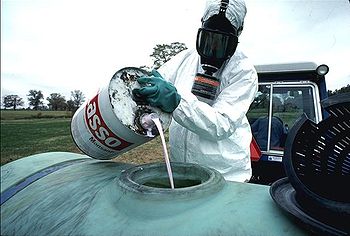Pesticides
Pesticides, many in number, are common SOCs (synthetic organic chemicals). The contaminate both wells and surface waters as a result of runoff from agricultural use. City lawns are the source of much pesticide contamination of water. Certain pesticides have been banned, but many very harmful substances are in use. Although many apparently break down, others have an extremely long life. Low levels of pesticides are found with greater frequency.
Each pesticide is considered separately, and there is no EPA MCL for pesticides in general. Treatment: In general, organics, whether synthetic like pesticides or natural, are removed most effectively by activated carbon filtration. Ultrafiltration will also remove organic compounds and reverse osmosis removes 97 to 99% of pesticides. |
||
|
||
